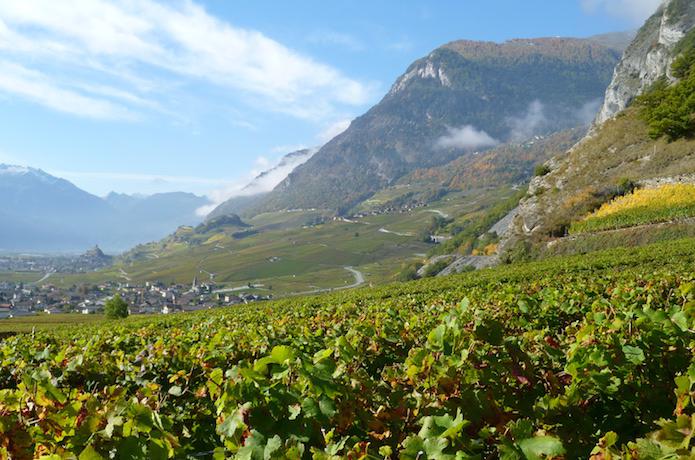Why Swiss wines are making their mark on English tastes
- Monday 19 September 2016
Christine Austin hits the high road in the Alps as she sets in search of Switzerland’s best wines. Most of the time, when I am travelling overseas, I have to explain where Yorkshire is, but not in Switzerland. Everyone in the Swiss wine business knows about Yorkshire – or at least about the company that is the major importer of their wines. Now based in Bradford, Joelle Nebbe-Mornod is Swiss-born and under her company name of Alpine Wines she has opened up the world of Swiss wines to UK consumers. The fact that she has to have a London phone number which is switched through to Yorkshire is for the benefit of Southern buyers who might take umbrage at having to buy wine from outside the M25.
Joelle has certainly set herself a difficult task. For a start, Switzerland produces a tiny amount of wine, yet the local consumption is high, so wine producers are able to sell locally at lower cost than exporting. At a wine fair in Sierre, I wandered from stall to stall tasting some excellent wines and then I asked if anyone exported. None did. In general, they were happy to make wine and sell it direct to consumers who flocked to the fair with credit cards at the ready.
Price is another factor against Swiss wines. The Swiss franc is riding high and Switzerland is known for its high cost of living, but just like everything that Switzerland sells, from watches to pharmaceuticals, the intrinsic quality is good. This is not the land of bulk wine. This is the place where small producers make individually, well-crafted wines that go supremely well with food.
The main regions for grape growing lie in a sweep across the western and southern regions of the country. I started my tour in the Vaud, the gently rising, south-facing land that overlooks Lake Geneva. This massive body of water has a direct effect on the climate, making winters shorter and summers longer. Chasselas is the key grape variety here, producing soft, creamy, delicate wines that accompany a plateful of grilled local lake fish perfectly. Despite its light, clean style it acquires different nuances depending on the soil-type and the village where it is grown. From the terraces of Lavaux to the clay and moraine soil of Chablais, the wines acquire mineral-edged flavours, with floral aromas and notes of ripe pear.
It was in the Vaud that I first met two new grape varieties, Gamaret and Garanoir. Developed during the 1970s, these are sibling varieties, with the same parentage of Gamay and Reichensteiner, but like family members they show different personalities. Gamaret is surprising for its damson-like fruit and tannic edges, while Garanoir is soft, light and fruity with a savoury depth. Both can be blended with Gamay, giving that grape greater expression and flavour.
Following the Rhône upstream, the Valais is the region that really looks alpine. The steep slopes of the mountains are terraced with centuries-old stone walls, each planted with just a few rows of vines. Narrow roads weave across the landscape, climbing higher and higher to reach isolated villages that eventually disappear into forest and then right at the top there are the stark structures for cable cars heading to the ski slopes. In winter this is a skier’s paradise, while in summer the area is full of walkers, navigating the hills and following the irrigation channels known as “bisses”.
This region of just 5,000 hectares produces a large proportion of Swiss wines. Chasselas is the main white grape, although here it is known as Fendant, while Pinot Noir is the main red grape. In addition, there are local grapes such as the full-bodied Heida, otherwise known as Savagnin, the delicate, fragrant Petite Arvine and the rare and delicious Amigne that can be made into dry or sweet wines, depending on ripeness. To avoid confusion, this wine is “sweetness rated” with pictures of one, two or three bees on the label. They also grow well-known varieties such as Chardonnay, Marsanne and Gamay which are sometimes used to bolster a blend.




